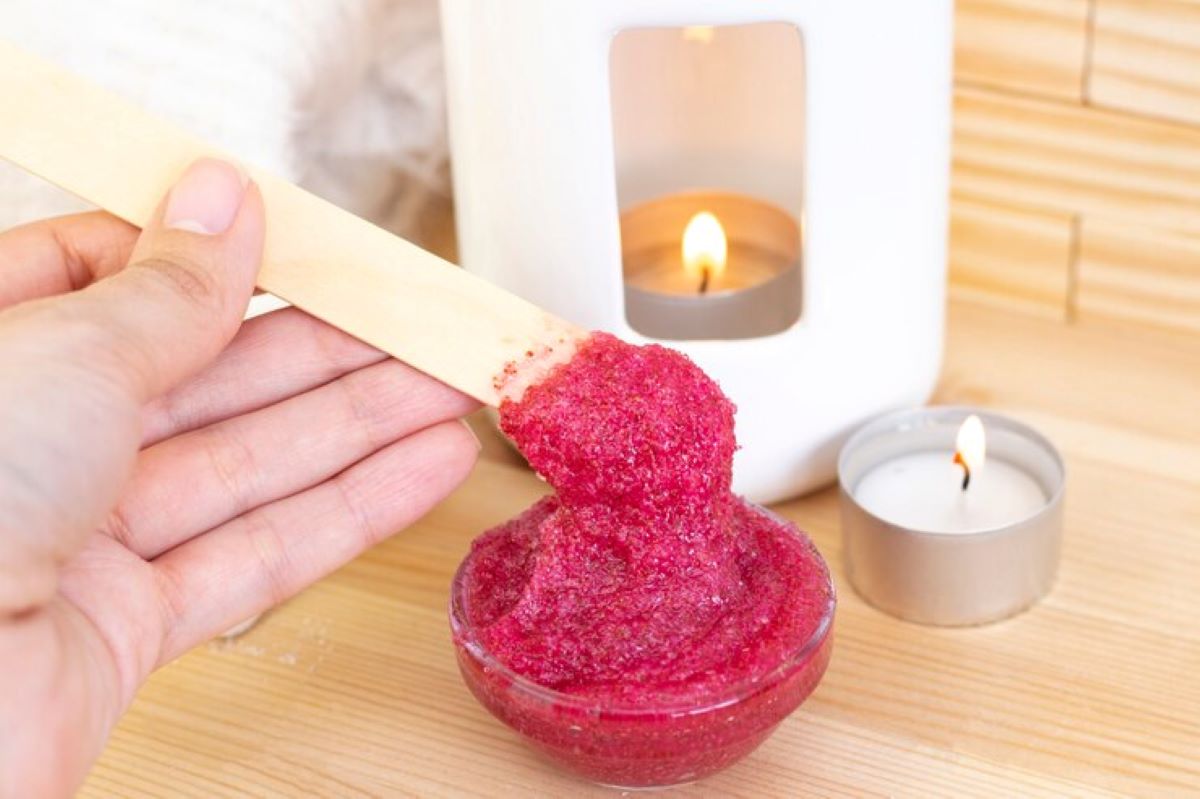Candle making has gained considerable popularity among hobbyists and entrepreneurs alike. While there are many types of wax available, C3 soy wax and 464 wax are among the most commonly used. Understanding their properties, advantages, and disadvantages can help you decide which is best suited for your candle making needs. This article explores the fundamentals of these two popular waxes, their key differences, and their pros and cons.
Understanding the Basics of Candle Wax
Before diving into the specifics of C3 soy wax and 464 wax, it’s essential to understand what candle wax is and why it’s crucial to the candle-making process. Candle wax serves as the foundation for creating candles, influencing their appearance, scent, burn time, and overall quality.
Candle wax types can vary by their base ingredients, melting points, and scent throw capabilities. Two of the more popular options—C3 soy wax and 464 wax—come from different sources and exhibit unique characteristics that appeal to different preferences and uses. The choice of wax can significantly affect the final product, making it important for candle makers to consider their desired outcomes when selecting a wax type.
What is C3 Soy Wax?
C3 soy wax is a hydrogenated version of soybean oil. It’s known for being a renewable resource and is particularly favored among those looking for eco-friendly options. C3 soy wax has a smooth, creamy texture that promotes an appealing finish for candles.
Manufacturers typically blend C3 soy wax with other natural additives to enhance its burning characteristics and scent throw. This wax is suitable for a range of candle types, including container candles and pillar candles, and is appreciated for the clean burn it provides. Additionally, C3 soy wax is often touted for its ability to hold color well, allowing candle makers to experiment with various dyes to achieve the desired aesthetic. The eco-conscious consumer will also appreciate that C3 soy wax burns cleaner than paraffin wax, producing minimal soot and contributing to better indoor air quality.
What is 464 Wax?
464 wax is a specific type of soy wax known for its high-performance qualities. It is often used by both beginners and experienced candle makers due to its versatility. This wax is known for its ability to hold and throw fragrance exceptionally well, which is a significant factor for many candle enthusiasts.
Similar to C3, 464 wax is derived from soybeans; however, it may have additional modified components that improve its blending and performance in various applications. It’s also favored for its smooth finish and ability to create attractive candles with vibrant colors. Candle makers often appreciate 464 wax for its forgiving nature, allowing for easy adjustments in fragrance load and dye concentration without compromising the integrity of the candle. Furthermore, its lower melting point makes it an excellent choice for those who prefer to work with a wax that cools and sets quickly, enabling faster production times for larger batches.
Key Differences Between C3 Soy Wax and 464 Wax
Though both C3 soy wax and 464 wax are derived from soybeans, several key differences can impact their performance in the candle-making process. Understanding these differences can help you make an informed decision on which wax to use for your projects.
Composition and Origin
C3 soy wax is primarily a natural soy wax blend, specifically designed to improve the combustion and aesthetic qualities of the final candle product. Its composition includes a higher percentage of pure soy wax, making it a preferred choice for eco-conscious candle makers.
On the other hand, 464 wax has modified components that enhance its structure and performance. This may include different additives to create a wax that offers superior fragrance retention and a consistent burn. The inclusion of these additives makes 464 wax highly popular among professional candle makers.
Melting Point and Burn Time
The melting point of C3 soy wax typically ranges between 120°F to 130°F, providing a good balance between ease of use and quality. Its burn time can vary but generally is competitive, allowing for long-lasting candles.
In comparison, 464 wax has a slightly higher melting point at around 130°F to 140°F. The higher melting point translates into a longer burn time, which is advantageous for candle makers aiming for extended usage in their products.
Scent Throw and Color Retention
One of the overwhelming features of C3 soy wax is its ability to hold and release fragrance. However, it’s essential to note that while C3 offers decent scent throw, it might not match the performance of 464 wax in this regard.
464 wax is particularly praised for its scent throw, especially when blended with fragrances. It can provide a more profound and consistent scent experience, making it an excellent choice for those seeking aromatic enhancements in their candles. Moreover, 464 wax retains color well, ensuring that the vibrant hues of candle dyes remain intact during burning.
In addition to these characteristics, C3 soy wax is often favored for its creamy texture and smooth finish, which can enhance the overall aesthetic appeal of the candle. This texture allows for easier pouring and molding, making it an ideal choice for DIY enthusiasts and beginners in candle making. The natural origin of C3 also appeals to those looking to create more sustainable products, aligning with the growing trend of eco-friendly crafting.
Conversely, 464 wax is known for its versatility and adaptability. It can be used in various candle types, including container candles and pillar candles, without compromising quality. The ability to blend well with different fragrance oils and dyes allows candle makers to experiment with unique combinations, leading to innovative products that can stand out in a competitive market. This adaptability has solidified 464 wax’s reputation as a go-to option for seasoned professionals looking to push the boundaries of their candle-making artistry.

Pros and Cons of Using C3 Soy Wax for Candles
Choosing C3 soy wax for your candle-making adventures comes with its own set of pros and cons. Understanding these can help you weigh whether this wax is the right fit for your projects.
Environmental Impact
One of the most significant advantages of C3 soy wax is its eco-friendly nature. Sourced from soybeans, it is a renewable resource, making it an excellent choice for environmentally-conscious consumers. Additionally, it produces minimal soot compared to paraffin candles, which can further reduce its environmental footprint.
However, growing soybeans for wax could impact land use and food supply. It’s crucial to consider the source and sustainability of the soy before making your purchase. Supporting suppliers who prioritize sustainable farming practices can help mitigate these concerns. Furthermore, the carbon footprint associated with transporting soy wax from its source to candle makers can also be a factor to consider, as local sourcing can significantly reduce environmental impact.
Ease of Use
C3 soy wax is relatively easy to work with, making it a favorite among beginners. Melting points are user-friendly, and it can be poured directly without requiring advanced skills. This makes it more accessible for those new to candle making or those looking to produce candles quickly.
Despite its user-friendliness, C3 may require additional practice for achieving consistent results, particularly regarding fragrance throw and color retention. Candle makers often experiment with different additives or techniques to enhance these properties, which can lead to a rewarding learning experience. Additionally, the wax’s ability to hold and release scents can vary based on the type of fragrance oils used, prompting makers to explore various combinations to find their perfect blend.
Cost Considerations
Cost is often a determinant in selecting a wax type for candlemaking. C3 soy wax typically falls within a moderate price range, making it an attractive option for hobbyists and small businesses. The affordability of C3 soy wax encourages many to start their candle-making journey without a significant financial commitment.
However, the investment in performance may lead some to consider alternatives, as cheaper wax might not offer the same level of quality or burning characteristics as higher-end options. It’s worth noting that while C3 soy wax is economical, the overall cost-effectiveness can also depend on the longevity and burn time of the candles produced. Many candle makers find that investing a little more in quality wax pays off in the form of longer-lasting, more aesthetically pleasing candles, which can enhance customer satisfaction and repeat business in a commercial setting.
Pros and Cons of Using 464 Wax for Candles
When evaluating 464 wax, there are numerous benefits and some drawbacks that candle makers should consider. This section will discuss the key factors that may influence your choice when working with this specific wax.
Performance and Quality
One of the most compelling reasons to choose 464 wax is its exceptional performance. The formulation allows for excellent scent throw, ensuring that your candles provide a pleasing aroma both when lit and unlit. Many professionals favor 464 wax due to its ability to produce high-quality candles with lasting results. The wax’s smooth texture and ability to hold fragrance oils effectively contribute to a more robust and enjoyable sensory experience, making it a favorite among both hobbyists and seasoned candle makers.
Despite its advantages, users must be mindful of the specific pouring temperatures and techniques required, as improper handling can lead to imperfections in the final product. For instance, pouring at too high a temperature can result in unsightly air bubbles, while pouring too low can cause uneven surface textures. Therefore, mastering the nuances of 464 wax is essential for achieving that perfect finish.
Versatility in Candle Making
464 wax is celebrated for its versatility. It easily accommodates various fragrances and colors, allowing for an array of creative candle designs. Whether you’re crafting pillar candles, votives, or container candles, 464 wax adapts well, producing consistent and reliable results. This adaptability also extends to the incorporation of additives, such as dyes and essential oils, which can enhance both the visual appeal and therapeutic qualities of the candles.
However, this versatility comes with the need for some technical knowledge. Candle makers should invest time in understanding the properties of 464 wax to unleash its full potential. Experimenting with different fragrance loads and blending techniques can lead to unique creations that stand out in the market. Additionally, understanding how the wax interacts with various wick types can significantly impact the burn quality and overall performance of the candle.

Price and Availability
While 464 wax might be slightly more expensive than its C3 counterpart, its performance may justify the cost for many. It is widely available and sold by numerous suppliers, making it easy to find and purchase. Many suppliers also offer bulk purchasing options, which can be a cost-effective strategy for candle makers looking to scale their production.
However, seasonal demand and market fluctuations can occasionally cause price variations, so it’s wise to keep an eye on prices when stocking up. Additionally, some suppliers may offer seasonal promotions or discounts, providing an opportunity to purchase 464 wax at a more favorable rate. Staying informed about these trends can help you manage your budget while ensuring you have a steady supply of this high-quality wax for your candle-making projects.
Related : Creating Elegance with Large Candle Jars for Handmade Candles


